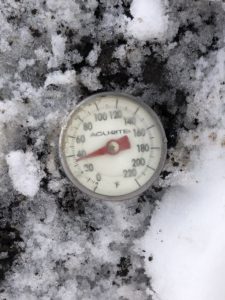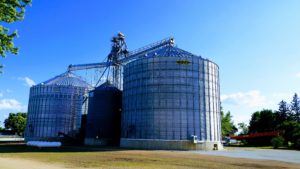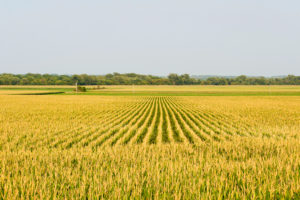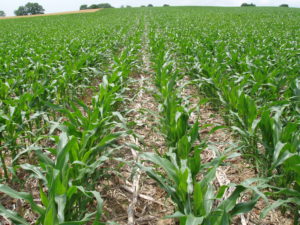Another snow storm – what else is new? Have you been restlessly tapping your foot, waiting for spring to come? A cold, wet Spring is not a new experience, but, it sure can be exasperating. Calving frustrations, feeding livestock in mud, difficulties in preparing planting equipment, roadway issues, and time marching on can cause just a little stress to those in production agriculture. Many of us struggled to complete our fall tillage/fertility program, adding to our agitation.
In a year when commodity prices appear to be challenging, protecting input investments, such as the seed varieties you and your seed sales representative have selected to be best for your farm, is particularly crucial. Your multi-peril crop insurance coverage decisions were made last month to protect your yield and mange some risk to your operation. Planting is the next step, and planting at the right time will also help you manage risk.
Waiting to plant in the “right” soil conditions can test our patience and tempt us to go ahead, even when waiting may be the wisest move. Seeing our neighbor in the field can be hard to ignore, but, as your folks may have told you in younger days, “Just because your friend jumped off a cliff, doesn’t mean you should too!” Good soil conditions provide an optimum seed bed, giving the seed that you have invested in the best foundation for producing an abundant crop. This year, ideal soil conditions may be hard to find. Expect to be challenged with varied down pressure requirements as the seed bed changes from perfect to wet to dry and back again. Wait for a minimum soil temperature of 50 degrees Fahrenheit at two inches, while you are planting. To assist you, we take daily soil temperatures, at planting depth, throughout the month of April and publish them on our Twitter feed and Facebook page.
Planting equipment in perfect working order with seed spaced evenly and at the correct depth is vital to ensure optimal performance. If you have seed meters that need attention, bring them in for us to test and repair. Don’t let the flip of the calendar page cause a short change in planter preparation. Having to stop and address issues while planting (that should or could have been handled at planter prep time) is less than ideal.
The use of seed treatments and fungicides on soybeans is especially critical in a cold wet Spring. These treatments provide another level of protection to the seed investment you have made, and count on, to best deliver profits to you in this crop year.
2019’s Spring looks to be a year when Prevented Planting may come into play. If prevented planting acres become a reality in your operation, visit with your crop insurance agent BEFORE you certify acres at FSA to refresh yourself on the PP rules and regulations.
Planting season is crunch time. We are always in a hurry to get it in the ground. Take it easy. Be careful and do it right. We cannot fix a planting mistake. We have to do it right the first time. After investing so much already, make every seed count. Get prepared and be ready to …GO!
And from my soap box: Thank you to the Huron Area Chamber and Visitor’s Bureau and the Prairie Family Business Association for presenting us with the Huron Area Family Business of the Year Award. Like many of you, we, and our staff, are involved in a family farming business operation. We are fortunate to enjoy working with our daughter and son-in-law, Callee and Jonathan, here at Bauman Agency, along with a cracker-jack dedicated staff who are involved in their own farming operations. Our family of dedicated staff members does a wonderful job serving all of you and helping us provide you with solid solutions for your seed, crop insurance, and precision planting sales and service needs from a farmer’s perspective. We feel lucky to work with them and you!
Featured Image Credit: Richard Corfield











